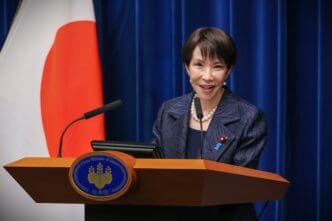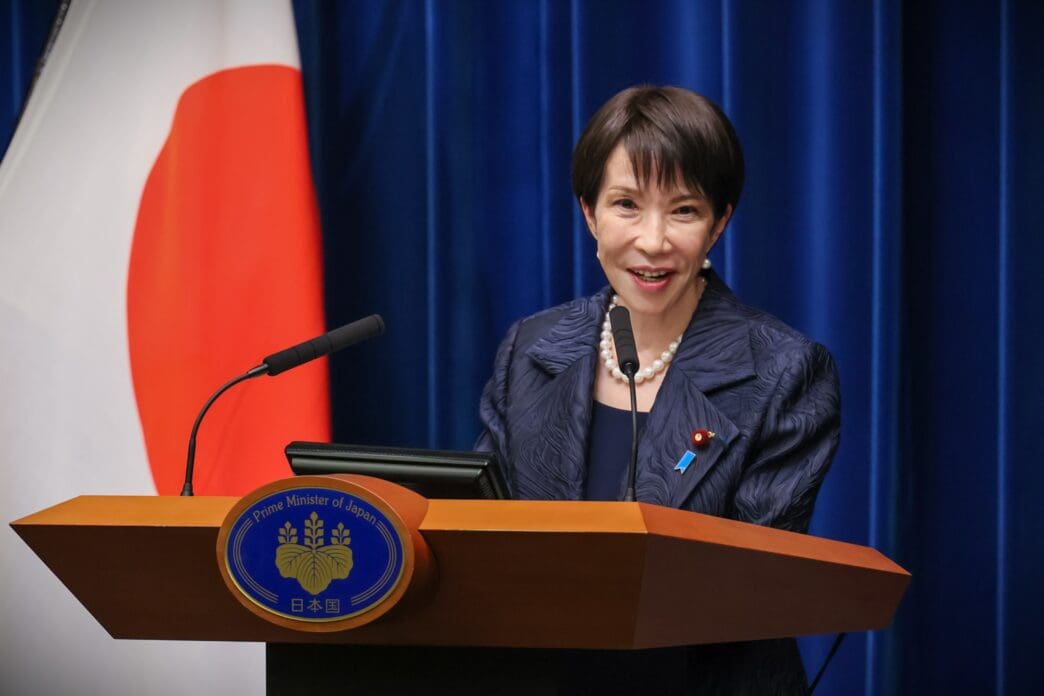Executive Summary
- Japanese Prime Minister Sanae Takaichi is set to hold her first official meeting with President Donald Trump, marking a critical diplomatic debut amidst regional summits.
- Key discussion points for the meeting include trade tariffs, Japan’s accelerated defense spending target of 2% of GDP by March 2026, and energy security, particularly regarding liquefied natural gas imports from Russia.
- Takaichi faces the complex challenge of balancing regional relations, particularly with South Korea and China, while navigating Washington’s encouragement for multilateral cooperation and both leaders’ hawkish stance on Beijing.
The Story So Far
- Japan’s new Prime Minister, Sanae Takaichi, faces a critical diplomatic debut with President Donald Trump, navigating renewed trade tariff disputes, Washington’s push for increased Japanese defense spending, and a desire to reduce Japan’s energy reliance on Russia. This high-stakes meeting also requires Takaichi to balance Japan’s strong US alliance with complex regional dynamics, including its relationship with China, its largest trading partner, and South Korea, all while managing her relatively limited international experience and domestic political pressures.
Why This Matters
- The high-stakes meeting between Prime Minister Takaichi and President Trump will be crucial in defining the future trajectory of the US-Japan alliance, with outcomes on trade tariffs, defense spending, and energy security set to impact bilateral relations and regional security. Takaichi’s performance on this global stage will also significantly influence her political standing and Japan’s intricate balancing act between its core US alliance and its complex relationship with China.
Who Thinks What?
- Prime Minister Sanae Takaichi aims to elevate US-Japan relations to “new heights,” accelerate Japan’s defense spending, seek clarity on trade tariffs, and navigate complex regional dynamics by balancing ties with China while signaling a softer diplomatic tone towards South Korea.
- President Donald Trump is expected to focus on increasing Japan’s defense spending, addressing trade tariffs, and encouraging Japan to reduce its reliance on Russian liquefied natural gas.
- Washington, more broadly, encourages multilateral cooperation between Japan and South Korea to alleviate America’s burden in the region and shares a hawkish stance with Japan on Beijing.
Japan’s new Prime Minister, Sanae Takaichi, is set to face her most significant diplomatic challenge yet as she prepares for her first official meeting with President Donald Trump in Tokyo on Tuesday. The high-stakes encounter comes amidst her attendance at the ASEAN summit in Malaysia and the APEC meeting in South Korea, with discussions expected to focus on critical issues including trade tariffs, regional security, and Japan’s defense spending.
A Critical Diplomatic Debut
The upcoming meeting marks a pivotal moment for Takaichi, who previously declined an invitation to meet Trump shortly after his election victory, stating her intention to meet him “in a dignified manner someday” as prime minister. That day has now arrived, following a “very good” phone call between the two leaders on Saturday, during which Trump reportedly described Takaichi as “great, beautiful… very friendly.”
Despite the long-standing strength of the US-Japan alliance, Takaichi’s relatively limited diplomatic experience and Trump’s often unpredictable approach make the meeting a critical test for the new Japanese leader. Her performance on the global stage could significantly influence her political future and the recovery of her Liberal Democratic Party, which is still grappling with recent corruption scandals, all while she enjoys a strong 71% approval rating at home.
Key Areas of Discussion
Defense Spending and Trade
Defense is expected to be a primary topic. Takaichi has pledged to accelerate Japan’s commitment to raise defense spending to 2% of GDP, pushing the target from 2027 to March 2026. However, financing this ambitious plan remains a challenge, particularly with a weakening yen and Takaichi’s advocacy for tax cuts.
Trade will also be a thorny issue. President Trump has reignited tariff disputes since returning to office, and while tariffs on Japanese goods have decreased from 25% to 15% after Tokyo agreed to invest $550 billion in US industries, Takaichi is anticipated to seek greater clarity on the details. To navigate these complex discussions, Takaichi has appointed seasoned negotiators, including Ryosei Akazawa, who led previous tariff talks, and former aides of President Shinzo Abe, known for their strong rapport with Trump.
Energy Security
Energy security will also likely feature in the talks. Japan currently imports approximately 10% of its liquefied natural gas from Russia, a dependency Washington aims to reduce. While Tokyo has committed to decreasing this reliance, it has also expressed concerns that an abrupt cutoff could jeopardize its energy security.
Navigating Regional Dynamics
South Korea Relations
Takaichi’s approach to regional relations will be closely scrutinized. Historically known for her hardline stance on issues with China and South Korea, including visits to the controversial Yasukuni Shrine, she has recently signaled a softer diplomatic tone. At her inaugural press conference, she expressed appreciation for Korean culture, stating, “I love Korean nori seaweed. I also use Korean cosmetics and watch Korean dramas.”
This shift aligns with Washington’s encouragement for multilateral cooperation among like-minded nations. Rintaro Nishimura, a senior associate at The Asia Group, noted a “growing understanding that Japan-South Korea cooperation is a necessity in this uncertain world,” suggesting that deeper defense ties between the two US allies could alleviate America’s burden in the region.
Balancing China
Perhaps Takaichi’s most intricate balancing act will involve China, Japan’s largest trading partner. Misako Iwamoto, an emeritus professor at Mie University, described Japan as “walking a tightrope between the US and China.” While Takaichi is perceived as “firmly right-wing,” according to Iwamoto, improving ties with Beijing without appearing anti-American might mitigate friction.
Both Trump and Takaichi share a hawkish stance on Beijing, particularly concerning Taiwan. Takaichi’s earlier visit to Taiwan, where she called for “cooperation with Taiwan to jointly address defense challenges,” drew condemnation from Beijing, which warned that Japan was “at a crossroads” under her leadership. Tensions between the two nations have also escalated with increased Chinese vessel activity around the disputed Senkaku Islands and Japan’s 2022 defense paper labeling China its “greatest security threat.”
Prime Minister Takaichi has declared her intention to elevate US-Japan relations to “new heights,” emphasizing the alliance as “the cornerstone of Japan’s foreign and security policy.” As she navigates domestic expectations and complex international challenges, her upcoming interactions will be crucial in defining her premiership and shaping the future trajectory of the US-Japan partnership.








